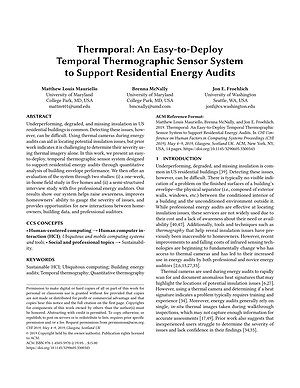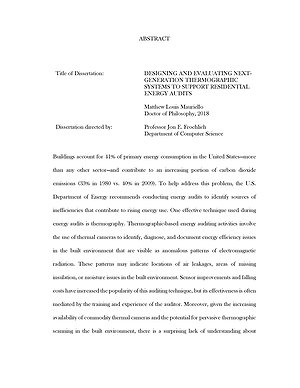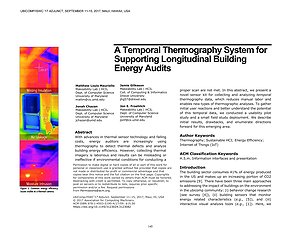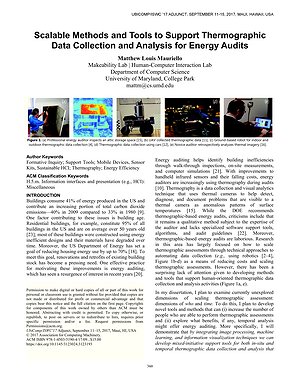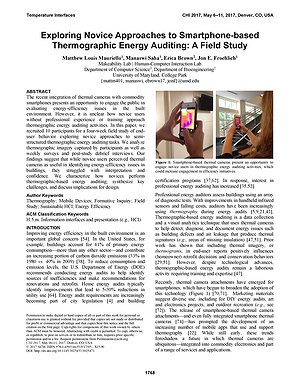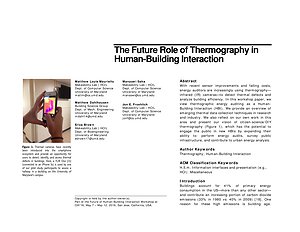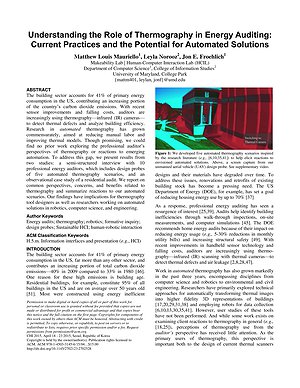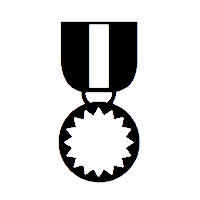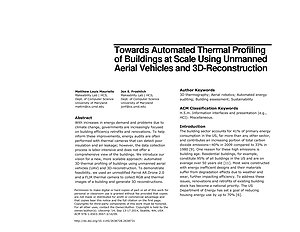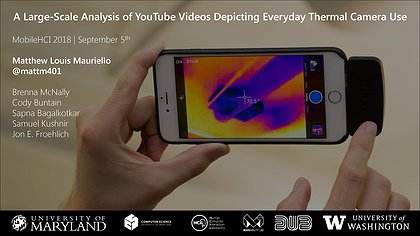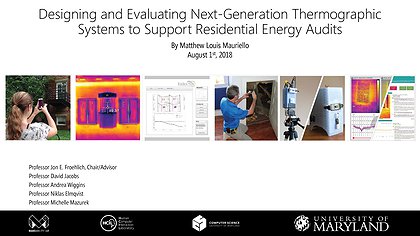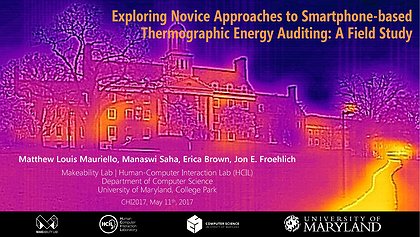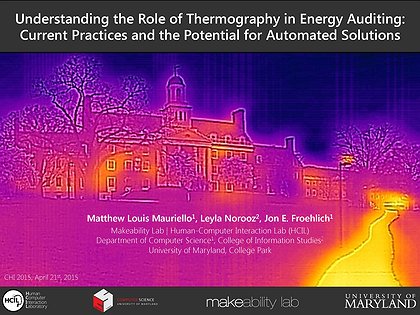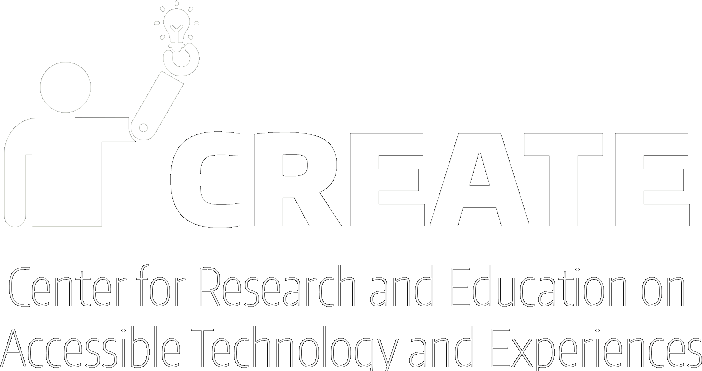Project Description
Our work focuses on thermography, a data collection and visual analytics technique utilizing thermal cameras, which energy auditors use to identify, diagnose, and document efficiency issues (e.g., missing insulation, air leakage) in buildings. The use of thermography during an energy audit helps the auditor find and communicate problems to building owners and including thermal imagery in inspection reports has been shown to lead to two primary outcomes: (i) an increased likelihood that the building owners will make retrofit decisions and (ii) an increased likelihood that building occupants will engage in conservation behaviors. With respect to increasing the overall energy efficiency of the built environment, both outcomes are desirable.
Our work investigates scaling thermographic inspections along two dimensions: first, scaling in terms of who can perform thermographic audits by building and evaluating computer assisted thermographic tools to help with both capture and analysis; second, scaling in terms of time by building and evaluating new indoor, automated temporal data collection and analysis tools. Related to this, we explore three key areas: (i) current thermographic energy auditing practices, (ii) the application of machine learning, image processing, and information visualization techniques to classify and gather insights from real world thermographic data, and (iii) developing new methods and tools to support human-oriented thermographic data collection and analysis activities.
Publications
Proceedings of CHI 2019 | Acceptance Rate: 23.8% (705 / 2960)
PDF | doi | Citation | Talk | Pervasive Thermography • Thermporal
Proceedings of MobileHCI 2018
PDF | doi | Citation | Talk | Pervasive Thermography
UMD CS PhD Dissertation 2018
Extended Abstract Proceedings of Ubicomp 2017
PDF | doi | Citation | Pervasive Thermography • Thermporal
Extended Abstract Proceedings of ACM Ubicomp 2017 Doctoral Colloquium 2017
PDF | doi | Citation | Pervasive Thermography
Proceedings of CHI 2017 | Acceptance Rate: 25.0% (606 / 2424)
PDF | doi | Citation | Talk | Pervasive Thermography
CHI 2016 Workshop: Future of Human-Building Interaction 2016
Proceedings of CHI 2015 | Honorable Mention
PDF | doi | Citation | Pervasive Thermography
Extended Abstract Proceedings of UbiComp 2014
PDF | doi | Citation | Pervasive Thermography
Talks
Sept. 5, 2018 | MobileHCI 2018
Barcelona, Spain
Aug. 1, 2018 | PhD Defense, Computer Science
University of Maryland, College Park
May 9, 2017 | CHI2017
Denver, Colorado, USA
April 6, 2017 | Lecture Series at the Laboratory for Telecommunication Sciences
LTS Auditorium, College Park, MD
PDF | Pervasive Thermography • MakerWear • BodyVis • HandSight • Project Sidewalk
April 22, 2015 | CHI2015
Seoul, Republic of Korea



